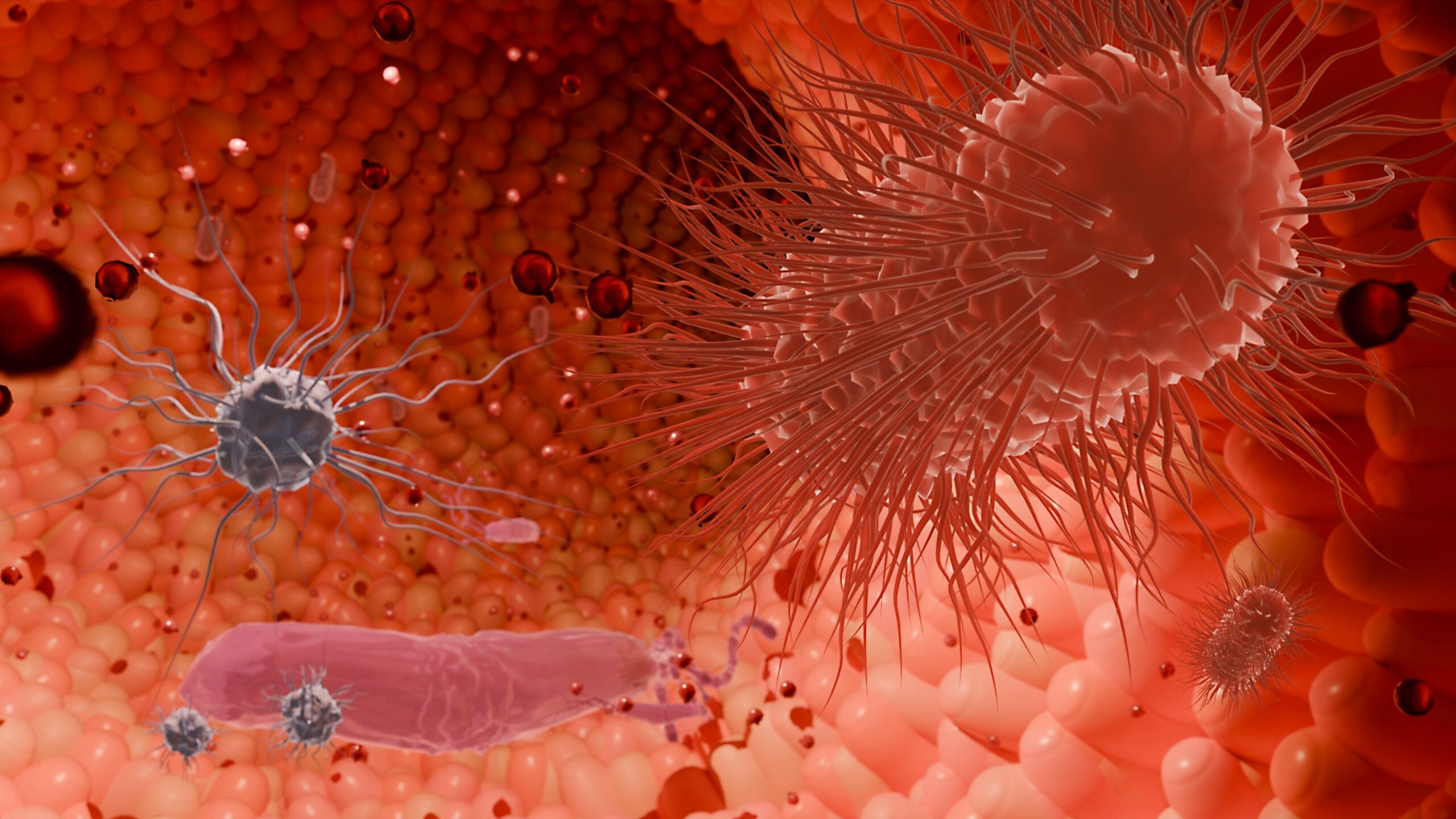
Body in Decline: Muscle Loss as an Early Symptom of Huntington’s Disease
Huntington’s disease doesn’t just damage the brain, it also breaks down muscles and fat, and disrupts nutrition early on. New work suggests there’s a hidden physical decline in early HD, so monitoring body changes could help with better care.

Huntington’s disease (HD) is typically viewed as a brain disorder, but new research highlights its lesser-known effects on the body, especially on muscles, fat, and nutrition, even in the early stages. A recent study found that people with early HD seem to already show signs of muscle loss, altered fat distribution, and malnutrition, which could contribute to increased dependence on others for day-to-day tasks and cognitive decline. These findings suggest the importance of viewing HD as a whole body condition and point to new opportunities for earlier interventions and possible biomarkers to track disease progression.
More Than a Brain Disease
HD is known as a genetic brain disorder, caused by an expansion of a DNA repeat sequence in the huntingtin gene. This leads to the production of a toxic protein, which accumulates and causes the well-known symptoms associated with changes in brain function: involuntary movements (chorea), behavior changes, and cognitive decline.
But the genetic change that causes HD is present in every cell within the body, so the disease’s reach goes beyond the brain. Changes in the heart, muscles, and even fat tissue have been documented. These so-called “peripheral” effects, that occur outside the brain and spinal cord, may begin early, chipping away at physical health before obvious symptoms appear.

Digging Into the Data: Muscles, Fat, and Function
A recent paper from a group in Austria explored the effects of HD on the body. The researchers studied 20 people living with early-stage HD (stages 1 and 2) and compared them with people who don’t have the gene for HD. They assessed body composition and strength using tools that measure fat to muscle ratio and handgrip strength.
They found that sarcopenia, or loss of muscle mass, strength, and function, seemed to be rare and found in only 15% of people with HD. Sarcopenia is age-related and common in elderly folks, which can contribute to their reduced mobility and increased falls. While sarcopenia itself seemed to be rare for people with HD, certain aspects of sarcopenia appeared to be more common: reduced muscle mass was seen in 60% of people with HD and reduced strength was present in 45%.
Despite these changes, most people with HD still had preserved walking speed, a potential sign that loss of muscle and strength could begin silently, before functional decline is visible.
Shedding Fat, and Weight
People with HD also seemed to show progressive fat loss, especially as they moved from early stage 1 to stage 2, which isn’t surprising as people begin to experience increased movements because of chorea. Body weight, body mass index (BMI), and visceral fat (fat around organs) all declined with disease progression.
There was unintentional weight loss reported from 25% of people with HD. This suggests the decline wasn’t due to reduced appetite or difficulty eating alone, and is likely part of the disease process.
Aside from an increase in calories burned because of chorea, molecular influences could also be at play. Weight loss could be contributed by the expanded huntingtin protein itself. Mitochondria are the cell’s powerhouse, and molecular changes that result from HD have been shown to impact the mitochondria’s ability to produce and store energy, in the brain as well as other tissues of the body. Additionally, expanded huntingtin may directly harm fat cells, alter metabolism, and trigger a form of programmed cell death.
Perhaps the most alarming finding from this recent study was the high rate of malnutrition in people with early HD. Using a standard assessment tool, the researchers found that 55% of people with HD were at risk for or already experiencing malnutrition.
Malnutrition: The Overlooked Risk
Perhaps the most alarming finding from this recent study was the high rate of malnutrition in people with early HD. Using a standard assessment tool, the researchers found that 55% of people with HD were at risk for or already experiencing malnutrition.
And this may not just be a side effect of weight loss, because it was linked to worse outcomes across the board:
- Lower muscle mass and fat
- More severe motor symptoms
- Higher levels of dependence on others for day-to-day tasks
- Executive function deficits (trouble planning or organizing)
This suggests that malnutrition could be a driver of decline, not just a consequence, underscoring how imperative it is to ensure that folks with the gene for HD focus on healthy diet and lifestyle choices that will allow them to maintain muscle mass and nutrition.
Why Nutrition Is So Hard in HD
However, there are many factors that contribute to nutritional challenges for people with HD. Motor symptoms like chorea can make eating and cooking difficult. Swallowing problems (dysphagia) can begin early and can be subtle. And increased calorie burn, especially in people with more movements, raises daily energy demands.
Together, these factors can create a vicious cycle: less intake, more energy burned, and faster decline. These challenges are further heightened by the lack of research in some of these areas, like dysphagia, which remains understudied in HD despite its importance.

So What Can Be Done?
Thankfully, this study doesn’t just point out problems, it offers solutions too.
Firstly, people with the gene for HD should seek nutritional support so that they can be screened early and often for malnutrition risk. Food textures can also be selected based on those that are easier to swallow. High-calorie diets and supplements can be considered for those with higher energy demands or those with trouble keeping weight on. And nutrient-rich diets, like the Mediterranean diet, may be beneficial for avoiding malnutrition.
Secondly, people with the gene for HD should focus early on physical activity to grow and maintain muscle mass. Resistance and endurance training, like walking or cycling, can help maintain strength. Exercise is known to improve motor function, walking, and balance, and may even help preserve brain volume and cognitive abilities.
Focusing on nutritional support and physical activity are more than just quality-of-life interventions, as this new research adds to a growing body of evidence suggesting they could delay functional decline and extend independence.
A Surprising New Tool: Muscles as a Biomarker?
Another exciting possibility raised by this study suggests that muscle mass or strength could potentially serve as a future biomarker for HD progression
Because measuring someone’s fat to muscle ratio is simple and widely available, tracking body composition might one day offer a non-invasive way to monitor this aspect of disease and test the peripheral effectiveness of new therapies, particularly those designed to target huntingtin outside of the brain.
Focusing on nutritional support and physical activity are more than just quality-of-life interventions, as this new research adds to a growing body of evidence suggesting they could delay functional decline and extend independence.
Looking Beyond the Brain
This study begins to reframe how we could think about HD. It’s not just a disorder of neurons in the brain, but rather a systemic condition that impacts every cell, affecting the body and brain in parallel.
And importantly, many of these physical symptoms, like muscle loss and malnutrition, could be impacted in a positive way through nutritional support and physical activity. Weight loss, reduced muscle mass, and malnutrition for people with HD don’t have to be inevitable. With early screening, proper support, and proactive care, we may be able to improve not just longevity, but quality of life.
TL;DR – Key Takeaways
- HD isn’t just a brain disease as it impacts every cell in the body, causing early changes in muscles, fat, and nutrition.
- Even in early stages, 60% of people with HD appeared to have reduced muscle mass, and 25% appeared to have unintentional weight loss.
- Over half were at risk of or already experiencing malnutrition, which was linked to worse motor and cognitive symptoms.
- Exercise and diet are promising interventions with both physical and cognitive benefits.
- Body composition could one day serve as a biomarker for HD progression in future trials.
Learn More
For more information about our disclosure policy see our FAQ…


